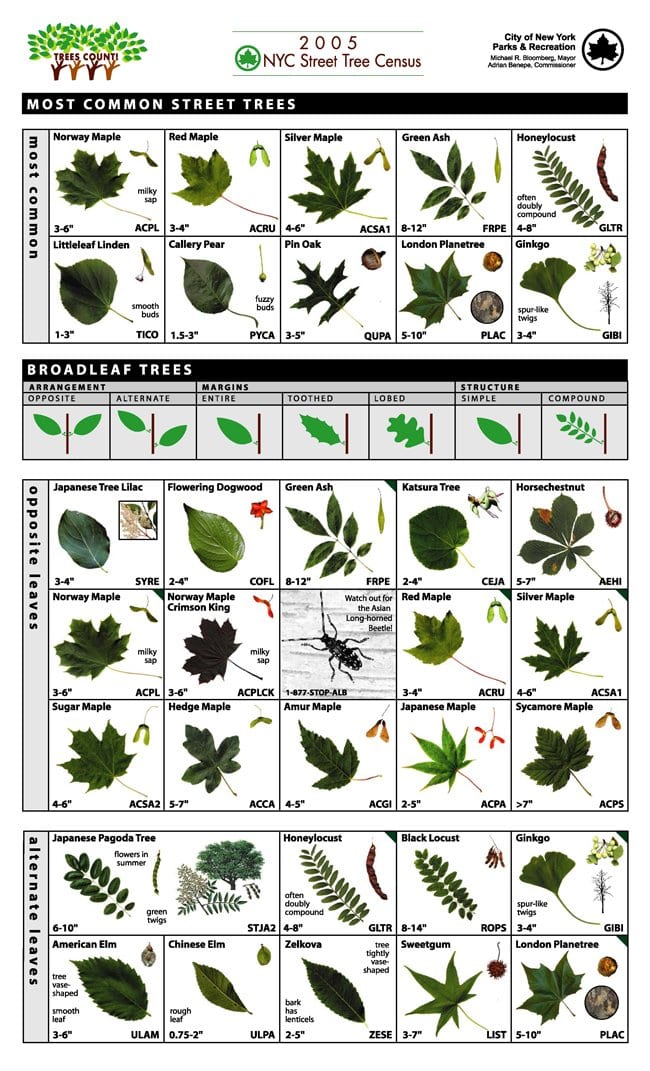

The roots of the tree support the trunk and crown, and also anchor the tree in the soil. The bark layer protects the tree from insects and disease, excessive heat and cold, and other injuries.

In the phloem (inner bark) layer, sugar that is made in the leaves or needles, is carried down to the branches, trunks, and roots, where it is converted into the food (starch) the tree needs for growth.
#Tree leaf guide pictures plus#
In the xylem (sapwood) layer, tree sap (water plus nitrogen and mineral nutrients) is carried back up from the roots to the leaves.

This is where diameter growth occurs, and where rings and inner bark are formed. The cambium produces both the xylem and phloem cells. The cambium is a layer or zone of cells, one cell thick, inside the inner bark. In many kinds of trees, the heartwood is a darker color than the sapwood, since its water carrying tubes get clogged up. It is old sapwood that no longer carries sap, and gives the trunk support and stiffness. The heartwood of the tree develops as the tree gets older. The trunk of the tree supports the crown and serves as a highway for food made in the leaves to travel to the roots and for water and nutrients from the roots to travel to the leaves. The crown of the tree is made up of the leaves and branches. The tree has one tap root and many lateral roots which help to keep it stable in wind and snow. The roots gather minerals and water which are needed in the process of photosynthesis and for feeding the tree’s growth and development. Along the way the minerals, water and sugar stimulate the growth and development of the tree or assist in its reproduction. The sugar combines at the roots with minerals and water in the ground to move back up the tree trunk and under the bark back to the leaves to which starts the cycle of photosynthesis again. That sugar that is produced runs down through the tree, under the bark down the trunk and to the roots of the tree. As a result of the process to create sugar the by-product that the trees produce is oxygen-a vital resource for other living organisms, including humans. Leaves produce sugar as a result of photosynthesis which combines carbon dioxide and sunlight. The food for tree is produced through complex system starting with the leaves. Like some plants, trees are perennials and can live for many years. Trees are in the family of woody plants which have cambium, a special layer of cells that allow the tree to increase in girth and are self supporting with a single stem. Trees, like all plants, manufacture their food through photosynthesis. Trees, similar to all living things grow, reproduce, and respond to their environment. Search, discover, and learn all about trees! The easy-to-use guide, available on iOS devices, features 708 types of trees found in North America - with nearly 4,000 photographs, text descriptions to help identify tree species, and robust search functions to aid in species identification.


 0 kommentar(er)
0 kommentar(er)
